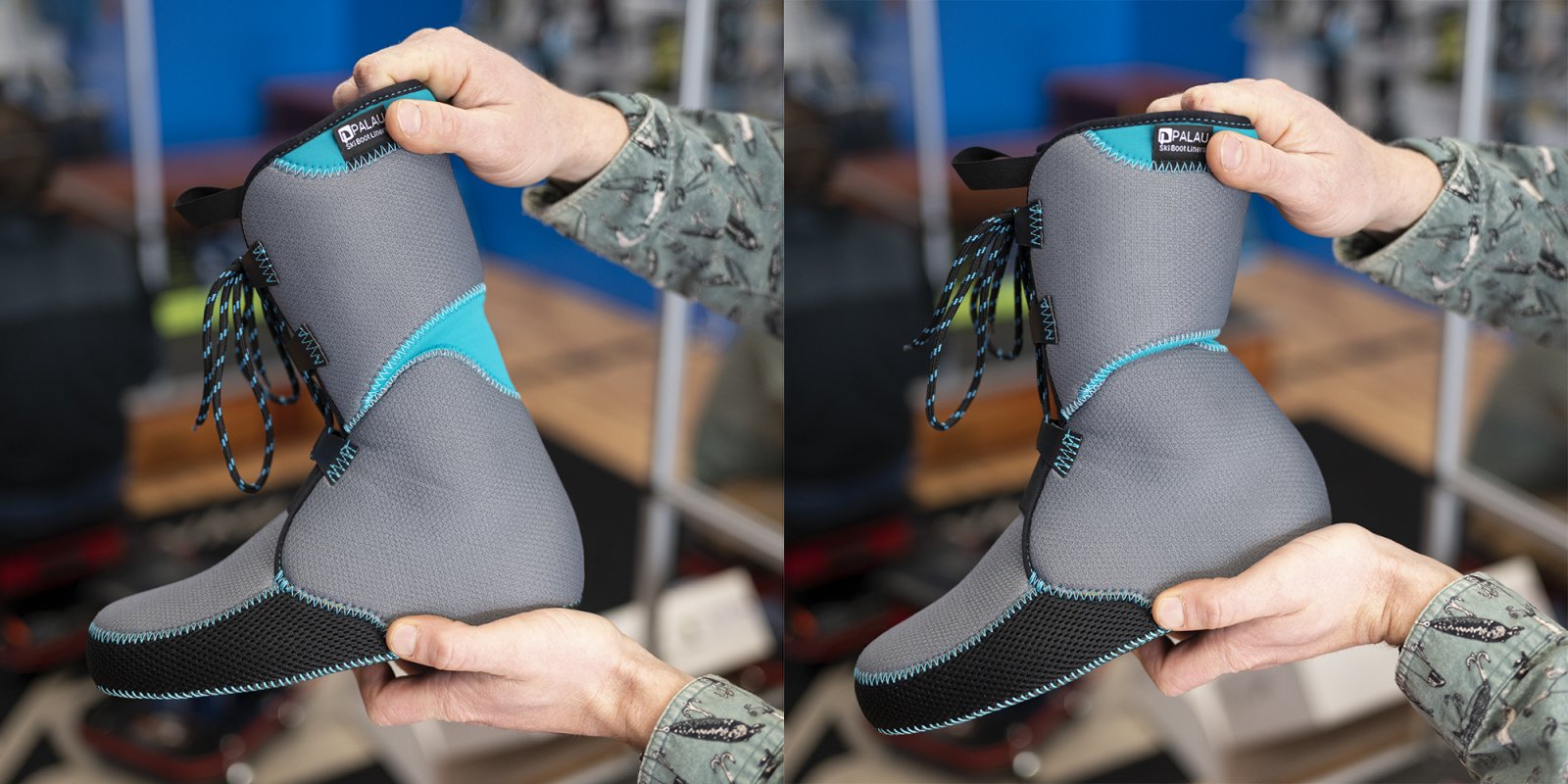2/23/2022 Replacing Ski Touring Liners
Whether you realize it or not, ski boot liners play a huge role in the success of your day of backcountry touring. If your initial reaction is “No way, I’ve never once thought about my liners!” then congrats, you’re currently in the right liners! However, if your boots never quite seem to make your feet happy, there’s a chance your liners are partially to blame. Or if they once felt great but now you’re getting hot spots and pain, your liners may be defunct.

Liners have the noble jobs of comfortably situating your feet in ski boot shells and being the first piece of gear that translates your energy to your ski (socks don’t count!) They need to do these tasks without getting in the way of other touring boot functions, such as walking. It's a tall order but thankfully not all that hard to achieve.
Liner Construction
Alpine touring liners, like downhill liners, are typically made of thermo-moldable closed-cell foam. The primary difference is that, unless the liners are very thin, they will have flex zones to accommodate ankle articulation that happens with every step while skinning. How touring liners differ from one another is primarily based on their thickness/volume, stiffness, cuff construction, and walkability.
The appropriate thickness of a liner varies based on both a boot shell’s volume and the skier’s foot. Too thin of a liner will be loose and your feet could be swimming in the boot while skiing. Too thick and you might not be able to get in the boot, it could be hard to close the cuff, or possibly be very uncomfortable for the foot and lower leg. Keep in mind, when a brand says it’s a “low volume” liner, that means it’s not as thick/voluminous and takes up less room in the boot than a medium or high volume liner. In other words, a low-volume liner is actually not suited for a skier with a skinny, low-volume foot.
It is important to get an appropriately sized cuff in order to accommodate your calves and the boot itself. Cuff construction and stiffness often work hand in hand. It makes sense that a bulky, dense cuff will also generally make for a stiffer liner. Intuition's Pro Tour liner is known for having thick cuffs, which may not be appropriate for boots on the svelte side. Other liners will add a dense piece of plastic or denser foam to the tongue to add stiffness.
All of these factors work together to create liners for different applications. For instance, a liner designed for skimo racing is going to be thin for low-volume race boots and allow for maximum range of motion. The inverse is true for freeride beef boots. It’s important to match the liner’s intention to that of the boot.

When to Replace
There are a few instances in which you’ll want to replace your liner - when your current liners are no longer cutting it or when you’re looking for increased performance or fit.
Worn Out - It’s pretty obvious when your old liners are past their prime. They’ll either be falling apart, packed out, causing hot spots, an unacceptable level of stank, or all of the above. If they started off fitting well but over time have begun to give you hot spots or blisters, that likely means they’re packed out. If they’ve always been painful, then they (or the ski boot) weren't the right fit in the first place which brings us to reason #2:
Poor Fit - A liner's fit is critical to boot performance. A sloppy or overly snug fit in the liner will cause all sorts of issues that can make for a painful ski tour. If you suspect this is the case, reference our article on finding a proper bootfit. Even if the boot shell is a perfect fit, the stock liner may not be a good match for the comfort or performance you desire.
Performance - Perhaps you’re looking to adjust the performance of your boot in one way or another. A stiffer, denser liner will transfer power better to your skis while a thinner liner will allow for better mobility when skinning. It's possible to tweak the performance in this way, noting you will still be limited by the plastic or carbon shell.
With lightweight ski touring boots, we often hear of warmth concerns. However, this isn't typically a variable you can effectively change with a liner. Having a thicker liner for very cold days or expeditions doesn't really work. In fact, a thinner or less-dense liner that allows for increased blood circulation could actually better promote warmth. If cold feet are a concern, check out the neoprene Boot Gloves, Snux Overboots, or heated socks that offer temporary add-on insulation, without messing with your fit.
Which Ones to Get?
If you’ve been happy with your liners but just need to replace them because they’re kicked, the easiest option is to just buy the replacement stock liner. Beware though, despite the demand, very few boot companies prioritize making their stock liners widely available. Dynafit and SCARPA are your best bets.
In any other case, you’ll need to select from aftermarket options. At Skimo Co, we carry several different liners that suit the needs of ski tourers. Remember, it’s important to match the liner’s intention with that of the boot’s intended use. When trying on a new liner, keep in mind that the first few uses are the tightest it will ever feel. You want even pressure but no pain. It's important to heat mold your liner and once you do, everything should be comfortable and locked in. After skiing a handful of days, it will slowly start to break in and become even more comfy.
Here's an overview of our liners and where they might work for you:
Palau Ultralight Race - These liners are thin, soft density, and enable a high level of mobility. Coming in either 5mm or 7mm thicknesses, these are the best companions for race boots.
Palau Tour Lite LV - Compared to the Ultralight Race, the Tour Lite Evo LV is a bit stiffer and thicker (but still only thin to medium thickness). Like the Ultralight Race, it allows for good mobility making it a good option to "beef up" a race boot or create volume in a touring boot.
Palau Tour Lite Evo MV - Getting to the middle of the road, the Tour Lite Pro Evo is medium stiffness and thickness. It walks and skis well, making it a great replacement for touring boots.
Palau Power LT - On the freeride side of Palau's offerings, the Power LT is fairly stiff and somewhat thick. This will work well if you want to replace a thick liner in a freeride boot to create extra breathing room or to stiffen up and get more performance out of touring boots. Generally, this liner will walk better than the Intuition offerings but isn't as stiff and will wear out more quickly.
Intuition Pro Tour - This is the go-to for beefy, freeride touring boots. It is thicker than the others and the stiffest. It also offers the most support, but the thick cuff may inhibit the cuff closure of touring boots. Generally, we recommend the MV for freeride boots while the LV is suitable for touring and some freeride boots. If you need to take up quite a lot of volume in a boot shell that is too big, the HV is the best option.
Intuition Tour Wrap - This liner works well for those who need to take up volume in the shin area, want to introduce padding in the shin area to prevent shin bang, or just want to emulate the feel of their wrap alpine liner. The MV will work best in freeride boots while the LV can be used with both touring and freeride boots. Please note that because of the two layers of foam over the shin, this will take up considerable space in the cuff.
Comments

3/11/2022
Ogden Skyline Traverse Trip Report








